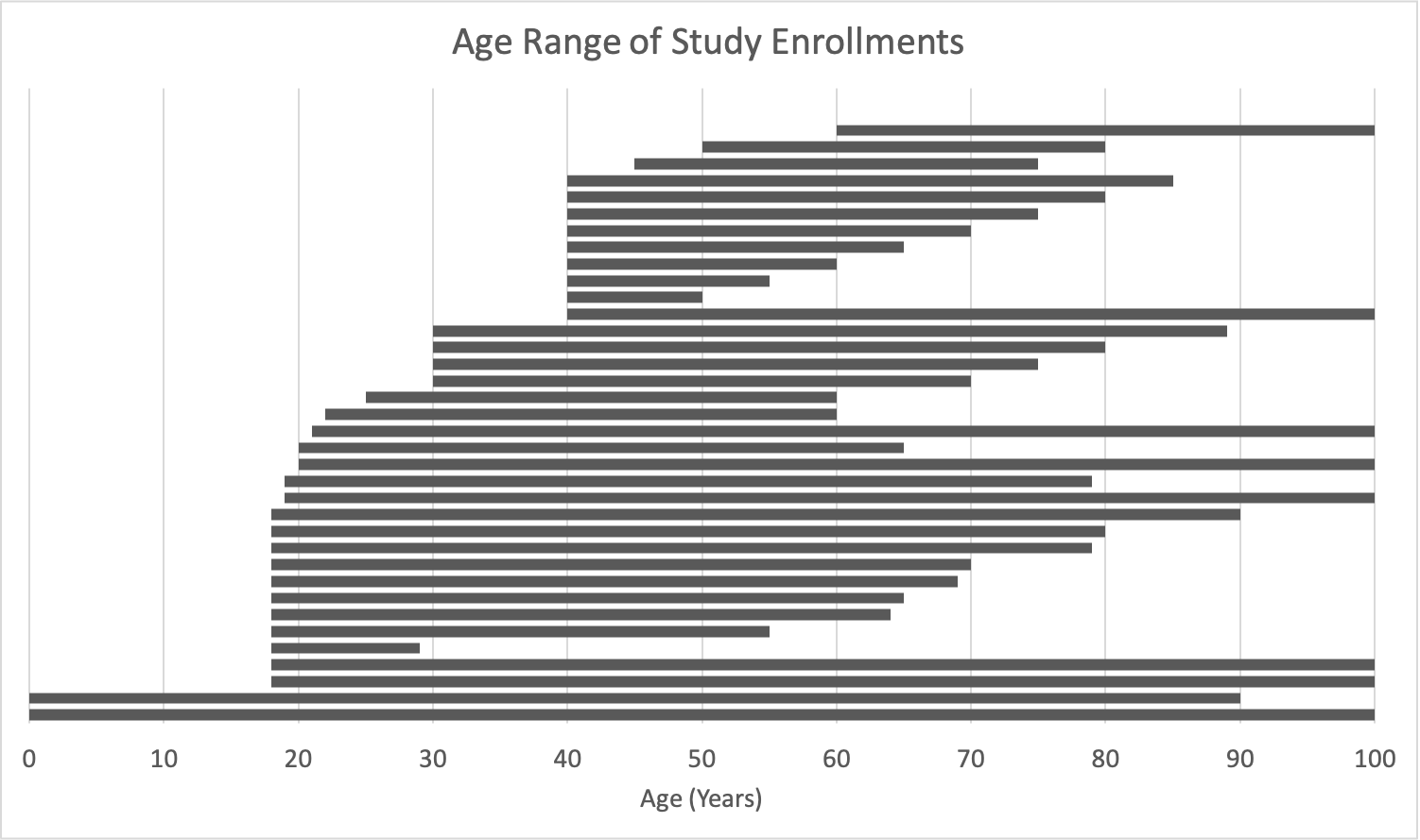Back
Poster, Podium & Video Sessions
Moderated Poster
MP38: Sexual Function/Dysfunction: Basic Research & Pathophysiology
MP38-17: Current Clinical Research in Erectile Dysfunction
Sunday, May 15, 2022
7:00 AM – 8:15 AM
Location: Room 222
Arshia Sandozi*, Benjamin Shpeen, Ariel Schulman, Brooklyn, NY
- AS
Arshia Sandozi, DO, MPH
Maimonides Medical Center
Poster Presenter(s)
Introduction: Erectile dysfunction (ED) affects more than half of men worldwide and is increasingly prevalent with age. More recent studies reveal larger numbers of young men diagnosed with ED. Etiologies vary, and include organic, iatrogenic, psychologic, and neurologic causes. The burdens of ED are medical, economic, and social. The purpose of this study is to evaluate the current focus of ED research.
Methods: Using data from the United States National Library of Medicine’s online registry of clinical research, we investigated ongoing clinical trials in ED. Trials with statuses of recruiting, active, or enrolling were evaluated for type of intervention, source of funding, location, and target population.
Results: We identified 61 unique active clinical research studies. The greatest number of trials, 26 (42.6%) were based in North America, 25 of which were based in the United States. This was followed by Europe (n=20, 32.8%), Asia (n=11, 18.0%), then Africa (6.6%). The greatest number of trials (n=20, 32.8%) investigated devices. This was followed closely by drug therapy (n=18, 29.5%), in which use of platelet rich plasma was most common. Eight (13.1%) trials evaluated procedures. Ten (16.6%) research studies specifically examined prevention or treatment of ED in patients who received treatment for prostate cancer, including radiation modalities and use of intraoperative neural monitoring. The lower age limit of enrollment ranged from zero to 60 years, and 45 trials (73.8%) enrolled patients less than 30 years of age. Only 3 (4.9%) studies set lower age limits at 50 or above. Funding could be provided by multiple sources, and included industry in 14 (23.0%) trials, United States Federal Agencies in four (6.5%) trials, and other sources (such as private companies, academic institutions, or hospitals) in 48 (78.7%) of trials.
Conclusions: Most contemporary ED clinical research is investigating the use of devices, followed by medical therapy, for treatment of ED. A particularly compelling area of research is in prevention of or management of ED associated with the treatment of prostate cancer. Although ED is often associated with age, several trials included young men in their enrollment, which aligns with increasing prevalence of ED in this population. Finally, despite the high prevalence and burden, federal research support is limited.
Source of Funding: None

Methods: Using data from the United States National Library of Medicine’s online registry of clinical research, we investigated ongoing clinical trials in ED. Trials with statuses of recruiting, active, or enrolling were evaluated for type of intervention, source of funding, location, and target population.
Results: We identified 61 unique active clinical research studies. The greatest number of trials, 26 (42.6%) were based in North America, 25 of which were based in the United States. This was followed by Europe (n=20, 32.8%), Asia (n=11, 18.0%), then Africa (6.6%). The greatest number of trials (n=20, 32.8%) investigated devices. This was followed closely by drug therapy (n=18, 29.5%), in which use of platelet rich plasma was most common. Eight (13.1%) trials evaluated procedures. Ten (16.6%) research studies specifically examined prevention or treatment of ED in patients who received treatment for prostate cancer, including radiation modalities and use of intraoperative neural monitoring. The lower age limit of enrollment ranged from zero to 60 years, and 45 trials (73.8%) enrolled patients less than 30 years of age. Only 3 (4.9%) studies set lower age limits at 50 or above. Funding could be provided by multiple sources, and included industry in 14 (23.0%) trials, United States Federal Agencies in four (6.5%) trials, and other sources (such as private companies, academic institutions, or hospitals) in 48 (78.7%) of trials.
Conclusions: Most contemporary ED clinical research is investigating the use of devices, followed by medical therapy, for treatment of ED. A particularly compelling area of research is in prevention of or management of ED associated with the treatment of prostate cancer. Although ED is often associated with age, several trials included young men in their enrollment, which aligns with increasing prevalence of ED in this population. Finally, despite the high prevalence and burden, federal research support is limited.
Source of Funding: None


.jpg)
.jpg)